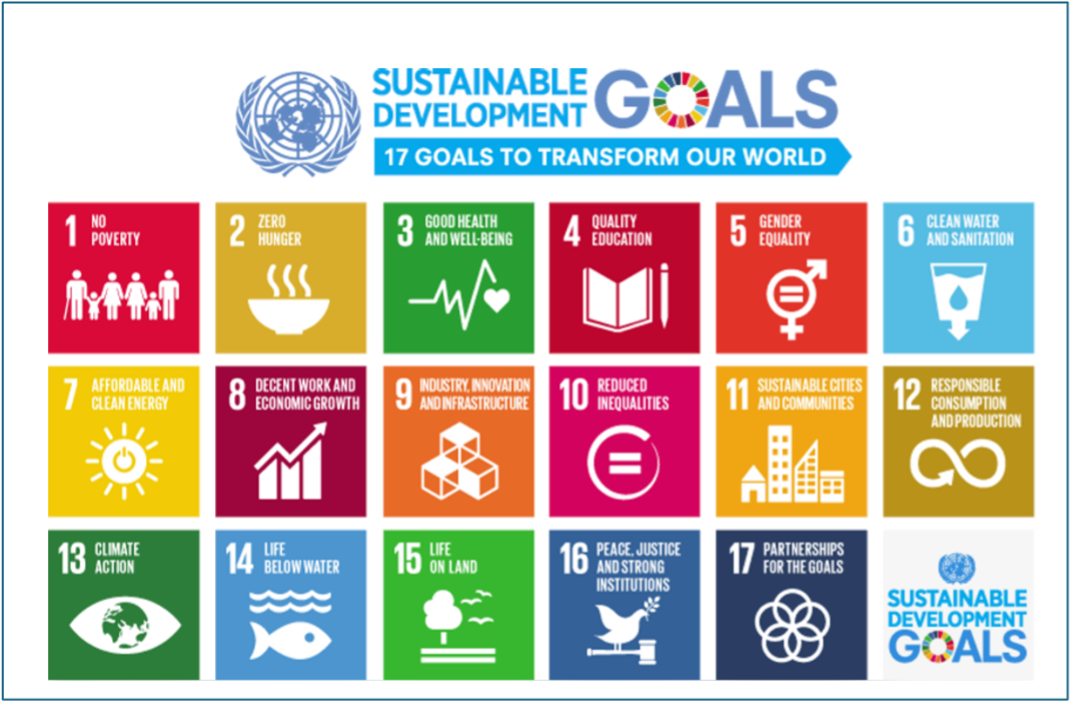By 2050, accommodating a global population of nearly 10 billion will demand a fundamental shift in food production, processing, trade, and consumption. To ensure that this larger population is nourished and that the process remains sustainable, significant enhancements are needed across global, regional, and local agri-food systems. There is a heightened focus on food safety, sustainability, trade policies, and biotechnology, leading to stricter regulations regarding pesticide use, GMO labeling, carbon footprints, labor practices, and food traceability. These evolving regulations are complex and create significant compliance challenges for food companies, requiring robust strategies to stay competitive and compliant. This article explores the current vulnerabilities in agri-food systems and offers strategic solutions to help navigate the regulatory complexities shaping the global market.
Asia accounts for half of the global food market, and its population is expected to grow by about 250 million people by 2030. During this period, food expenditure in the region is projected to more than double to $8 trillion, driven by population growth, shifting consumer preferences, and increasing wealth. Unlike traditional food exporters like the U.S. and Europe, Asia is predominantly a net importer of food. China, for instance, imports more than $100 billion worth of food annually, while India, which was self-sufficient in food, now imports $33 billion of farm products. Countries like Singapore and Brunei lack land and resources to develop an agricultural industry to meet their populations’ food demands, and rely heavily on imports. Food security is, therefore, a major concern, especially for city-states where long-term planning is critical to ensure that food is readily available.
Can we feed 10 billion people?
With the expansion of the world’s population to 10 billion by 2050, food production must more than double to avoid widespread hunger and malnutrition. This exponential growth presents a monumental challenge as food production systems are strained, in terms of:
Resource depletion: Intensive farming practices deplete soil fertility, water resources, and biodiversity. For example, monocultures and excessive use of chemical fertilizers and pesticides can degrade soil health and lead to long-term sustainability issues.
Climate impact: Agriculture is a major source of greenhouse gases, including methane from livestock and nitrous oxide from fertilized soils. At the same time, climate change is affecting crop yields and food production, creating a feedback loop of increased emissions and reduced productivity.
Food waste: A significant portion of food is wasted at various stages of the supply chain, during production, processing, distribution, and consumption. This waste represents lost resources and contributes to environmental problems without addressing food insecurity.
Inequitable distribution: Food is often unevenly distributed, leading to food deserts in low-income areas and excessive waste in wealthier regions. This inequity affects access to nutritious food and contributes to global hunger and malnutrition.
Economic inequality: Small-scale farmers and producers, particularly in developing countries, often struggle with poor market access, low prices, and limited resources. This economic disparity hinders their ability to invest in sustainable practices and improve their livelihoods.
Over-reliance on industrial agriculture: The focus on industrial-scale farming prioritizes short-term productivity over long-term sustainability. This can lead to environmental degradation, loss of traditional farming knowledge, and reduced resilience of food systems.
Neglect of local food systems: Global supply chains and large-scale agribusinesses can overshadow local food systems and traditional agricultural practices, which can be more sustainable and culturally appropriate but often receive less support.
Are we failing?
Sustainable agri-food systems are integral to achieving a range of development goals, as they encompass the entire value chain from production to consumption while ensuring environmental, social, and economic sustainability. These systems are designed to produce enough food that is nutritious and accessible to all, thereby directly contributing to food and nutrition security.
Beyond just meeting immediate food needs, sustainable agri-food systems also create jobs and provide income opportunities, especially in rural areas, supporting sustainable employment and livelihoods. This, in turn, helps reduce poverty and inequality. Additionally, they promote the conservation of biodiversity and the sustainable use of natural resources, such as soil, water, and forests, which are vital for maintaining ecosystem health and resilience.

Source: United Nations.
However, despite the critical role of sustainable agri-food systems in fostering global development, there is growing concern that the world is falling short of the targets set under the United Nations’ Sustainable Development Goals (SDGs), particularly those related to hunger (SDG 2), sustainable economic growth (SDG 8), and climate action (SDG 13). The Food and Agriculture Organization (FAO) warns that with 2030 approaching, progress is lagging.
Several challenges exacerbate this situation, such as climate change, which has already begun to reverse some of the recent gains in improving sustainable rural livelihoods and reducing malnutrition. Extreme weather events, shifting climate patterns, and increasing global temperatures are undermining agricultural productivity and food security.
In addition to climate change, other factors such as economic instability, conflicts, pandemics, and unsustainable agricultural practices also pose significant threats. These interconnected crises put pressure on already vulnerable food systems, making it even harder to achieve the SDGs on time.
The clock is ticking
Pursuing food systems transformations has never been more critical as we race to get the world back on track to achieve the 2030 Agenda. FAO has prioritized the achievement of the SDGs as a core element of its strategy and mandate. Through its Strategic Framework 2022-2031, FAO aims to foster more efficient, inclusive, resilient, and sustainable agri-food systems to promote better production, improved nutrition, a healthier environment, and an enhanced quality of life, ensuring that no one is left behind. In September 2023, the United Nations selected a total of 12 High Impact Initiatives to provide a platform for member countries to renew their commitment to urgent actions to be taken in the seven years to accelerate progress towards the SDGs.
A sustainable food future is within reach if we act now. By embracing innovative agricultural practices, reducing food waste, promoting plant-based diets, and supporting local and regenerative farming, we can create a food system that is both environmentally sustainable and capable of feeding a growing global population.
To address rising food insecurity, food and agriculture policies must be further refined and aligned with both environmental and social goals all levels (global, regional, and local). Investing in climate-resilient agriculture, implementing inclusive policies that empower smallholder farmers, and enhancing international cooperation are vital steps toward building more sustainable, equitable, and resilient agri-food systems around the world, and will bring us closer to achieving the SDGs by 2030.
Complexities of compliance
While there is growing acceptance of the need for agri-food systems to become more resilient, sustainable, and equitable, how these transformations take shape over time will have tremendous implications, which is itself evolving in tandem with the changing global context. Navigating the complex regulatory landscape, requires proactive strategies and a mindful approach. A mindful approach in this context involves considering all aspects of regulatory compliance, from legal requirements and industry standards to ethical considerations and best practices.
Here, we outline key strategies to guide the process:
1. Develop a robust regulatory compliance framework
Companies need to establish comprehensive compliance frameworks that are regularly updated to reflect changes in regulations across different markets. This involves maintaining a dedicated regulatory affairs team that monitors regulatory changes, liaises with regulatory bodies, and ensures that internal practices align with legal requirements. Digital platforms and regulatory software can be utilized to automate monitoring and compliance tasks, reducing the risk of non-compliance.
2. Implement risk management and scenario planning
Companies should integrate risk management and scenario planning into their business strategies to prepare for potential regulatory changes. This involves conducting regular risk assessments, modeling various regulatory scenarios, and developing contingency plans to ensure business continuity.
3. Leverage technology to enhance traceability and transparency
Utilize advanced digital tools, such as blockchain and IoT, can significantly enhance supply chain traceability and transparency. For example, blockchain technology can be used to create tamper-proof records of a product’s journey from farm to fork, ensuring compliance with traceability regulations and building consumer trust. IoT devices can monitor environmental conditions in real-time, ensuring adherence to safety and quality standards.
4. Collaborate with local partners and stakeholders
Collaborating with local partners, including suppliers, distributors, and regulators will help companies better understand local regulations and adapt to them. Local partners can provide valuable insights into regulatory expectations and facilitate smoother market entry and compliance.
5. Engage in regulatory advocacy and policy dialogue
Active engagement in policy advocacy can help companies influence regulatory frameworks. By participating in trade and farmer association forums and public-private partnerships, agri-food companies can work collaboratively with regulators to shape practical and business-friendly policies.
6. Invest in training and capacity building
Continuous training and capacity-building initiatives for employees on evolving regulatory requirements is critical. By educating staff on food safety, environmental standards, labeling, and sustainability protocols, companies can ensure compliance across the value chain. This also involves building expertise in navigating international trade regulations, especially for export-oriented businesses.
7. Adopt third-party certifications and standards
Obtaining third-party certifications such as GlobalG.A.P. and ISO 22000 can help companies demonstrate compliance with international standards and access new markets. Certifications provide assurance to both regulators and consumers that products meet specific safety, quality, and sustainability criteria.
8. Diversify markets and supply chains
Market and supply chain diversification are crucial strategies to mitigate regulatory risks. By expanding into multiple regions and reducing dependency on a single market, companies can better navigate trade restrictions, tariffs, and non-tariff barriers. Diversifying supply sources can also reduce the risk associated with regulatory changes or geopolitical disruptions in specific regions.
9. Align business strategies with sustainability goals
Business operations with global sustainability goals can help companies to not only meet regulatory requirements but also position themselves as leaders in sustainability. Initiatives like reducing greenhouse gas emissions, minimizing waste, and adopting sustainable sourcing practices are increasingly becoming regulatory expectations and market differentiators.
Summary
The global agri-food sector is evolving rapidly, driven by sustainability imperatives, technological advancements, shifting consumer preferences, and complex regulatory environments. To succeed in this dynamic landscape, companies must adopt strategic solutions that prioritize regulatory compliance, leverage technology, engage in policy advocacy, and build resilient and diversified supply chains.
These systems must be designed to offer fair employment and livelihoods for all participants, deliver affordable, nutritious food to consumers, and protect our natural resources. Only then can agri-food businesses turn regulatory complexities into opportunities for growth, innovation, and market leadership.
About the Author
Irene Gomez is co-head at cmXp2, specializing in strategic communications and advocacy for the food, health, agriculture, agri-food and aquaculture sectors. Full Bio
About cmXp2
cmXp2 (“Xp2”) is a strategy advisory firm dedicated to supporting organizations in high-regulated sectors, specifically: Food & Nutrition, Agriculture & Agri-Food/Aquaculture, Life Sciences, and Global Banking & Markets, Institutional & Corporate Banking. For organizations in these sectors, Xp2 helps them navigate complex and dynamic regulatory, legal and ethical parameters to define and execute strategies that generate meaningful value, shape opinions, enhance reputation and drive market impact. Our senior partners’ deep sector leadership expertise across these high-regulated sectors is well-placed to help clients succeed. Xp2 is a division of the award-winning Corporate Media Services Pte Ltd (CorpMedia) that has over 32 years of experience. The firm is headquartered in Singapore and serves the Southeast Asia region.
3 Pickering Street | #02-36 Nankin Row | S048660 | UEN 199202411E
www.cmXp2.com | www.linkedin.com/company/cmxp2/









